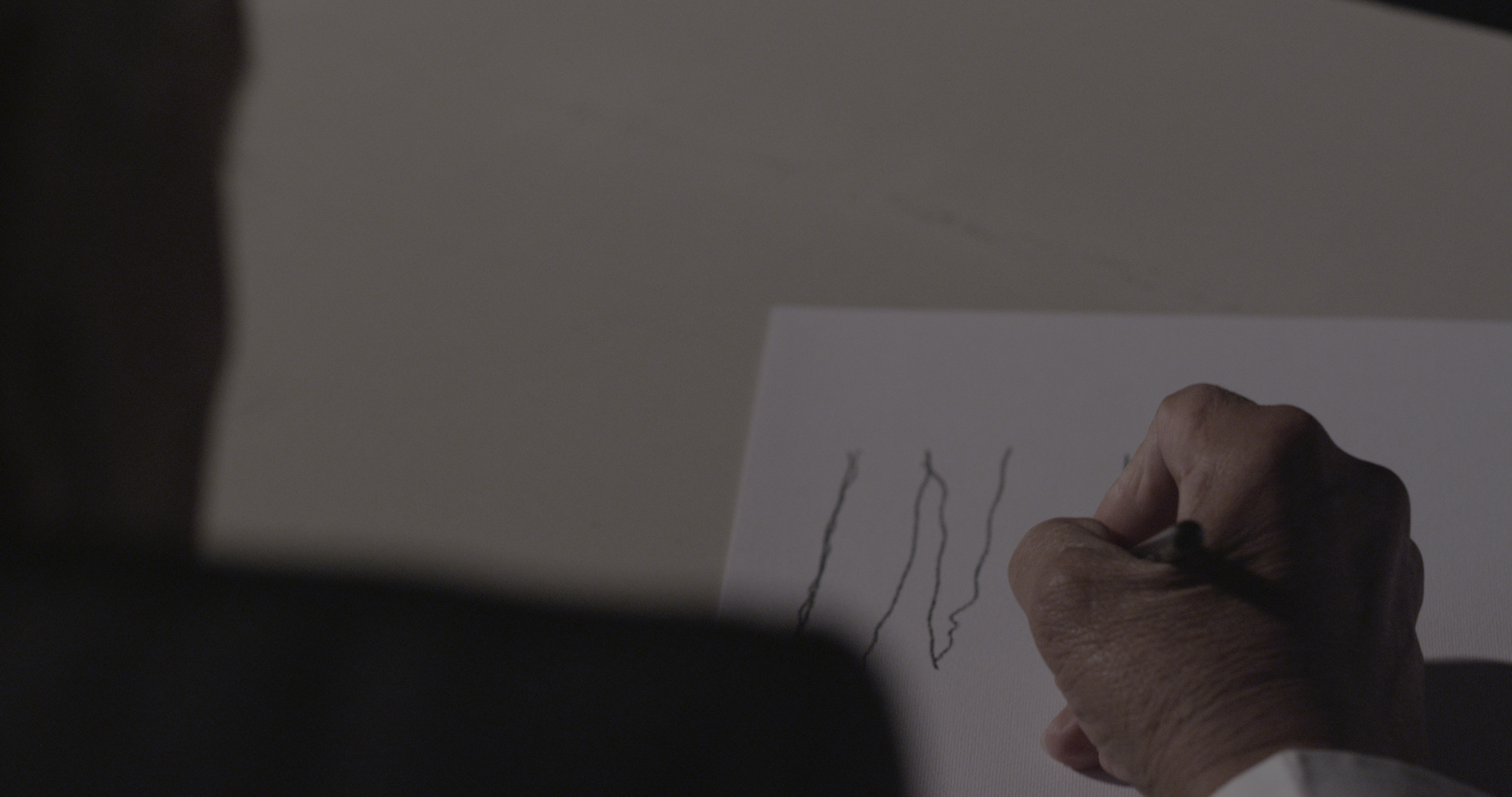
— Log in to watch the artist video if you have been given an access
- Artist
- Damir Očko
- Title
- TK
- Year
- 2014
- Duration
- 19 min 46 s
- Format & Technical
Single channel, colour, spoken and music sound
5 + 2 AP
- Voice
- Text
- Text editing
- Produced by
- Music
- Sound production
- Cast
- Special thanks
- Production
Voices, words, silence: TK is a polyphonic work, distressing yet poetic, that explores in a visually compelling narrative what is told, the untold and what can’t be told. Based on an eight-part poem, the film evokes, in a fragmented narrative, the weight of memory and the language of the body, marked by the circumstances staged on the images. If anything, Ocko’s work reveals the limits and boundaries of corporeality through an echo of words that the featured male bodies translate in an evolving atmosphere of both tension and melancholy. The first line follows the tireless attempts of the shaky hands of an old man to write down a poem line: “In tranquillity there is no burden”, the hands confess, in a space where tranquillity “is an empty space between fingers”. But there are no fingers, the voiceover reminds us, through a scene in which almost naked bodies struggle with the raw, inclement coldness of winter. The force of nature wins the battle, against age, against the rough weather, the weight of time and memory. In this linguistically fractured exploration of physicality, Ocko reveals how shivering muscles and bare limbs try to remain tranquil –and how they fall apart, losing their control, under uncontrolled circumstances. The body, a mechanism of resistance and endurance, is challenged, generating a scene of quiet, implosive violence.
TK revolves around, as well, the labor of the cast exposed in harsh conditions. It investigates the issue of exploitation behind the art system in a precise exercise of self-reflection and self-questioning. The production process is inevitably reviewed, introspectively, through the images that unfold: the incapable hands of the anonymous old man, the incapable bodies to stand in the snowy, freezing wilderness. The incapability of language to grasp in words what we can understand through the images. The relation with the environment and corporeality provide the backdrop to highlight the individual efforts, exposed to the bone, truncated by contingencies. TK leaves us with an uncanny sense of community, in which the audience is placed in a similar position as the film’s protagonists: unsafe, uncomfortable, powerless, and empathetic yet detached. The performatic, though veritable nature of the scenes, draw a complex portrait of various psyches. The coalescence between apparently unconnected narratives happens thanks to a personal visual (images) and textual (words, silence, voice) grammar. TK explores the phenomenology of the medium, as a mirror of both the self and the commune. It reveals the power of the video device as a tool to analyze the relation between the subject, the audience and the artistic process. And it is, ultimately, the voiceover confession to have kept “the future in the freezer, preserved in ice cubes, until the first hot day” that leaves us restless, as it reveals the raw materialization of the opposite: freezing bodies in the present, some with also a past, exposed, burdened to the bone.
Carlota Surós
Stills





